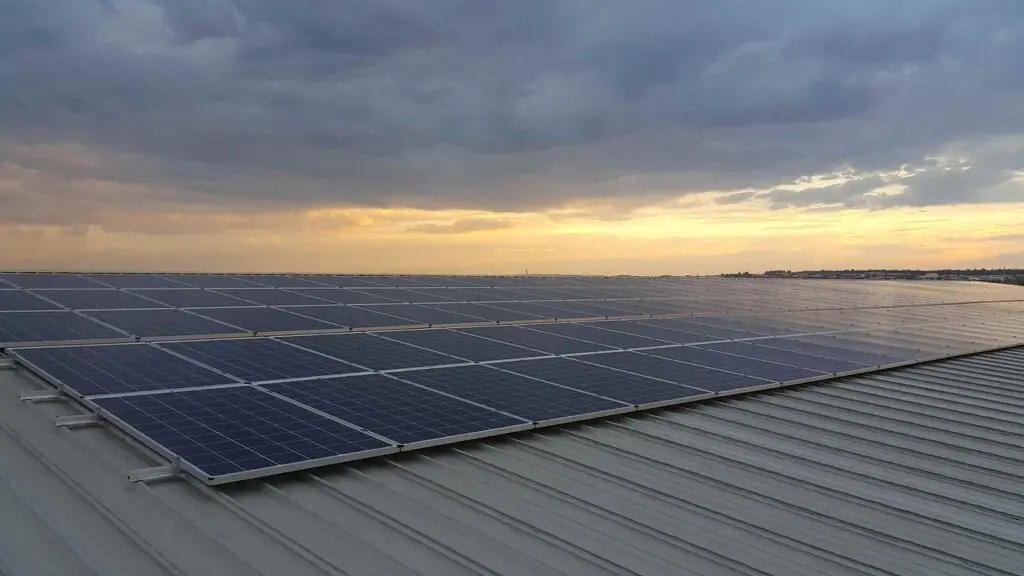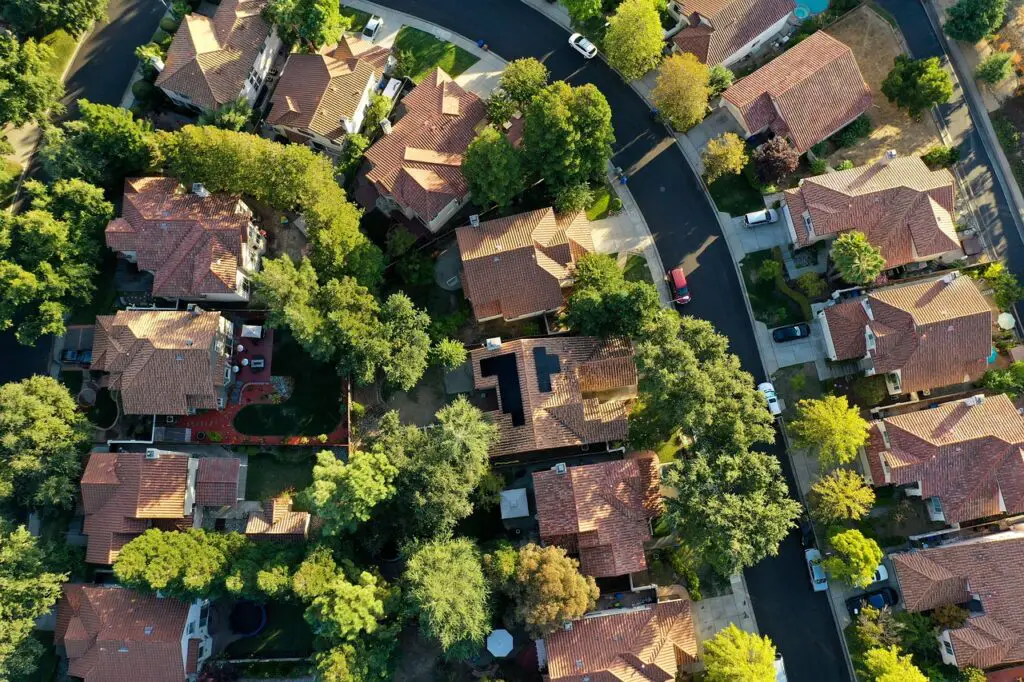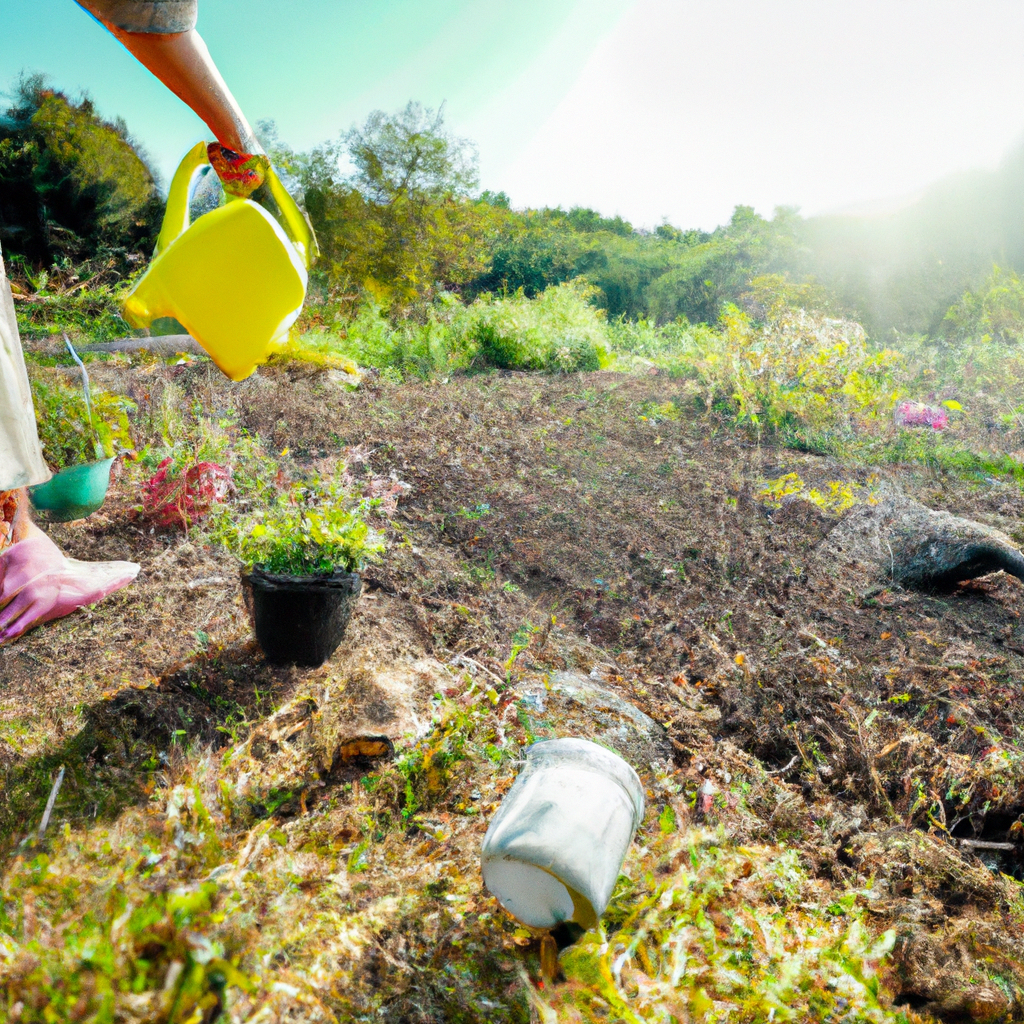Living an eco-friendly lifestyle doesn’t have to be expensive. In fact, there are numerous budget-friendly ways to embrace sustainability and reduce your carbon footprint. From making small changes in your daily routine to adopting simple habits, this article will provide you with practical tips on how to live a greener life without breaking the bank. So, get ready to discover easy and affordable ways to incorporate eco-friendly practices into your everyday routine and make a positive impact on the planet.
Reduce Energy Usage
Switch to LED light bulbs
One of the easiest and most effective ways to reduce your energy usage is by switching to LED light bulbs. LED bulbs use significantly less energy than traditional incandescent bulbs, resulting in lower electricity bills. Additionally, LED bulbs have a longer lifespan, so you won’t have to replace them as frequently.
Unplug electronics when not in use
Believe it or not, even when appliances and electronics are turned off, they can still consume energy if they’re plugged in. This phenomenon is known as “phantom energy” or “vampire power.” To combat this, make it a habit to unplug devices when they’re not in use. Alternatively, you can use power strips with switches to easily turn off multiple devices at once.
Adjust thermostat settings
Heating and cooling your home accounts for a significant portion of your energy usage. By simply adjusting your thermostat settings, you can reduce your energy consumption and ultimately save money. In the winter, set your thermostat a few degrees cooler, and in the summer, set it a few degrees warmer. Consider using a programmable thermostat to automatically adjust the temperature according to your schedule.
Use natural light and ventilation
Take advantage of natural resources to minimize your energy usage. Make use of natural light during the day by opening curtains and blinds. Similarly, open windows to allow fresh air to circulate and reduce the need for air conditioning. By relying less on artificial lighting and climate control systems, you’ll decrease your overall energy consumption.
Insulate your home
Proper insulation is crucial for maintaining a comfortable indoor temperature and reducing energy waste. Insulate your home by sealing any gaps or cracks around windows and doors. You can also add insulation to your attic and walls to prevent heat loss during the winter and keep your home cooler in the summer. Improving your home’s insulation will decrease the amount of energy needed to heat or cool your living space.
Conserve Water
Fix leaking faucets and pipes
Leaky faucets and pipes can lead to significant water waste over time. Even a small drip can add up to gallons of wasted water in a day. Check your plumbing regularly for any leaks and promptly fix them. This simple step can help conserve water and prevent unnecessary water bills.
Install water-efficient fixtures
Replace old and inefficient fixtures with water-saving alternatives. Install low-flow showerheads, faucets, and toilets to reduce water usage without sacrificing performance. These fixtures use less water without compromising the comfort and convenience of your daily routines.
Take shorter showers
Showers are often one of the highest consumers of water in a household. By shortening your shower time, you can save a significant amount of water. Try timing your showers or using a water-saving showerhead to further reduce your water consumption. Remember, every drop counts!
Collect rainwater for garden irrigation
Rainwater harvesting is an excellent way to conserve water and reduce your dependence on the municipal water supply. Set up rain barrels or storage tanks to collect rainwater from your roof. Use this water for watering your plants, garden, or even for cleaning purposes. It’s a sustainable and cost-effective way to utilize the natural resources available to you.
Reuse water when possible
Don’t let water go to waste. Whenever possible, find ways to reuse water around your home. For example, collect water while waiting for the shower to warm up and use it to water your plants. You can also reuse water from cooking or rinsing fruits and vegetables to water your garden. Be creative and find ways to minimize water wastage in your daily activities.

Minimize Waste
Start composting
Composting is a fantastic way to divert organic waste from the landfill and create nutrient-rich soil for your garden. Instead of throwing food scraps, yard waste, and other biodegradable materials in the trash, start a compost pile or use a composting bin. Composting not only helps reduce waste but also provides an environmentally-friendly alternative to chemical fertilizers.
Reduce food waste
Food waste not only contributes to environmental problems but also leads to wasteful spending. To minimize food waste, plan your meals carefully and make a shopping list before going to the grocery store. Buy only what you need and try to use up leftovers creatively. By being mindful about your food consumption, you can reduce waste and save money.
Avoid single-use items
Single-use items, such as disposable plates, cups, and cutlery, contribute to an enormous amount of waste. Whenever possible, opt for reusable alternatives like cloth napkins, stainless steel water bottles, and glass food containers. Reduce your reliance on single-use items and help reduce the amount of waste that ends up in landfills.
Donate or sell unwanted items
Rather than tossing unwanted items in the trash, donate or sell them. By giving these items a new life, you’re reducing waste and supporting sustainability. Consider donating to local charities, thrift stores, or online platforms. Remember, one person’s trash can be another person’s treasure!
Repair and repurpose instead of buying new
Before rushing to buy something new, consider if the item can be repaired or repurposed. Broken electronics, furniture, or clothing can often be fixed with a little effort. Get creative and find new uses for items that have outlived their original purpose. By prolonging the lifespan of your belongings, you’ll be reducing waste and saving money in the long run.
Shop Mindfully
Buy second-hand items
Shopping at thrift stores, consignment shops, or online resale platforms is not only budget-friendly but also eco-friendly. Buying second-hand items helps reduce the demand for new products, thus decreasing the environmental impact of manufacturing and transportation. You can find unique and high-quality items while giving pre-loved goods a second chance.
Choose products with minimal packaging
Excessive packaging contributes to waste and uses valuable resources unnecessarily. When shopping, opt for products that have minimal packaging or are packaged using eco-friendly materials. Look for products with recyclable or biodegradable packaging to minimize the environmental impact of your purchases.
Support local and sustainable businesses
Support businesses that prioritize sustainability and environmental responsibility. Seek out local and sustainable alternatives for groceries, clothing, and other goods. When you support local businesses, you’re not only reducing carbon emissions from transportation but also contributing to your community’s economic growth.
Buy in bulk to reduce packaging waste
Buying in bulk reduces the amount of packaging per unit of goods, leading to less waste. Choose products that you frequently use and have a longer shelf life. By buying in bulk, you’ll not only save money in the long run but also minimize the packaging waste associated with individual or smaller-sized products.
Make a shopping list and stick to it
Impulse buying often leads to unnecessary purchases and waste. Before heading to the store, prepare a shopping list that includes only the essential items you need. Stick to your list and avoid buying items on a whim. By planning your purchases, you’ll reduce waste and make more mindful choices.

Grow Your Own Food
Start a vegetable garden
Growing your own food is rewarding, cost-effective, and eco-friendly. You can start small with a few herb plants in pots or go all out with a backyard vegetable garden. Not only will you have access to fresh and organic produce, but you’ll also reduce your grocery bills and lower your carbon footprint by avoiding long-distance transportation of food.
Utilize vertical gardening techniques
If you have limited space, consider vertical gardening techniques to maximize your growing area. Vertical gardens allow you to grow plants upwards instead of outwards. Install wall-mounted planters, utilize hanging baskets, or repurpose vertical structures like pallets. By going vertical, you can grow a wide variety of plants while saving space.
Save seeds for future planting
Saving seeds from your harvested produce allows you to grow plants year after year without purchasing new seeds. Learn how to properly save and store seeds from your favorite fruits and vegetables. This practice not only saves money but also helps preserve genetic diversity and promotes sustainable agriculture.
Use organic pest control methods
Avoid harmful pesticides and opt for organic pest control methods in your garden. Natural alternatives, such as companion planting, homemade sprays, and physical barriers, can effectively keep pests at bay without compromising the health of your plants or the environment. Maintaining a balance between pests and beneficial insects is key to a thriving, eco-friendly garden.
Preserve excess produce
When your garden produces an abundance of fruits and vegetables, don’t let them go to waste. Preserve your excess produce by canning, freezing, or drying them. These methods allow you to enjoy your harvest throughout the year, reducing the need for store-bought options and minimizing food waste.
Use Eco-Friendly Cleaning Products
Make your own cleaning solutions
Many everyday cleaning products contain harsh chemicals that can harm both the environment and your health. Instead of using these chemicals, consider making your own cleaning solutions using natural ingredients such as vinegar, baking soda, and lemon juice. Not only are these alternatives effective, but they are also budget-friendly and non-toxic.
Switch to environmentally friendly brands
If making your own cleaning solutions isn’t your thing, there are plenty of eco-friendly cleaning brands available on the market. These products are typically made from plant-based or biodegradable ingredients, reducing their impact on the environment. Look for brands that clearly label their products as being environmentally friendly.
Use microfiber cloths for cleaning
Microfiber cloths are an excellent choice for cleaning because they require less water and cleaning agents. Unlike disposable wipes or paper towels, microfiber cloths can be washed and reused multiple times, reducing waste. They are highly effective at capturing dirt and dust, making them a valuable tool for eco-conscious cleaning.
Avoid chemical air fresheners
Chemical air fresheners may provide temporary pleasant scents but often release harmful pollutants into the air. Opt for natural alternatives like essential oils or homemade air fresheners made from baking soda and natural fragrances. These options will keep your home smelling fresh without compromising your indoor air quality.
Dispose of hazardous products properly
When it comes time to dispose of household cleaning products or other hazardous materials, it’s important to do so responsibly. Many communities have designated drop-off centers or hazardous waste disposal facilities where you can safely and legally discard these items. By disposing of hazardous products properly, you’re protecting the environment and ensuring the safety of your community.

Opt for Sustainable Transportation
Walk or bike for short trips
For short distances, consider walking or biking instead of driving. It’s not only more environmentally friendly but also a great way to incorporate exercise into your daily routine. Plus, you’ll save money on fuel or public transportation fares.
Take public transportation
When feasible, opting for public transportation is an eco-friendly choice. Buses, trains, and trams have a significantly lower carbon footprint compared to individual cars. By taking public transportation, you’ll reduce air pollution, decrease traffic congestion, and contribute to a more sustainable urban environment.
Carpool or rideshare
Share your commute with others by carpooling or using rideshare services. Carpooling not only reduces the number of vehicles on the road but also helps save on fuel costs. Carpooling with friends, neighbors, or coworkers can be a fun and convenient way to travel while minimizing your impact on the environment.
Maintain fuel-efficient driving habits
When driving is necessary, adopt fuel-efficient driving techniques to reduce your carbon emissions. Avoid excessive idling, accelerate and brake gently, and keep your tires properly inflated. Regular vehicle maintenance, such as oil changes and filter replacements, can also improve fuel efficiency. By being mindful of your driving habits, you’ll save money on fuel and lessen your environmental impact.
Consider electric or hybrid vehicles
If it’s time for a new vehicle, explore electric or hybrid options. Electric vehicles (EVs) produce zero tailpipe emissions, while hybrid vehicles combine an electric motor with a traditional engine, resulting in lower fuel consumption. While these vehicles may have a higher upfront cost, they offer long-term savings and help significantly reduce greenhouse gas emissions.
Save Money on Utilities
Sign up for energy-saving programs
Many utility companies offer energy-saving programs or incentives for their customers. These programs often provide resources, tips, and even financial incentives to help you reduce your energy consumption. Contact your utility provider to inquire about available programs and see how you can save on your utility bills.
Use smart power strips
Smart power strips can help eliminate “phantom energy” by automatically cutting off power to devices that are not in use. Plug your electronic devices into a smart power strip and let it do the work of reducing standby power. This simple switch can save energy and lower your electricity costs.
Install a programmable thermostat
A programmable thermostat allows you to set different temperature preferences for different times of the day. Adjusting the temperature according to your schedule can prevent unnecessary energy usage when you’re not at home or asleep. By optimizing your heating and cooling settings, you’ll save energy and reduce your utility bills.
Conserve water usage
Reducing water usage not only helps conserve this precious resource but also saves on water bills. Implement simple practices like turning off the faucet when brushing your teeth, fixing leaks promptly, and using efficient appliances. Being mindful of your water consumption can result in significant savings over time.
Utilize natural ventilation and lighting
Make the most of natural resources to reduce your reliance on artificial lighting and climate control systems. Open windows to let fresh air in and use fans instead of air conditioning whenever possible. Similarly, maximize natural daylight by opening curtains and blinds. By embracing natural lighting and ventilation, you’ll minimize your energy consumption and reduce your utility expenses.

Reduce, Reuse, Recycle
Downsize your belongings
Living with fewer belongings not only creates a simpler lifestyle but also reduces waste. Take a critical look at your possessions and consider downsizing. Donate or sell items that you no longer need or use regularly. By decluttering, you’ll reduce waste, simplify your life, and potentially even earn some extra money.
Repair instead of replacing
When an item breaks or stops working, don’t automatically assume it needs to be replaced. Take the time to investigate if it can be repaired instead. Repairing appliances, electronics, or clothing extends their lifespan and reduces waste. Learning basic repair skills or seeking professional help can save you money and minimize your environmental impact.
Donate or recycle electronics
Electronics contain valuable resources that can be reused or recycled. Instead of throwing away old electronics, consider donating them to organizations that refurbish and distribute them to those in need. If the devices are beyond repair, find responsible electronics recycling centers in your area. By donating or recycling electronics, you’re keeping these items out of landfills and reducing electronic waste.
Create a recycling system at home
Establish a recycling system in your home to ensure that recyclable materials are properly sorted and disposed of. Set up designated recycling bins for paper, plastic, glass, and metal. Educate yourself and your family about what can and cannot be recycled in your local area. By making recycling a habit, you’ll reduce the amount of waste that goes into landfills.
Buy recycled products
Support the recycling industry by opting for products made from recycled materials. Look for labels indicating that a product is made from recycled content. Common examples include paper products, plastic bottles, and clothing. By choosing recycled products, you’ll help create a demand for recycled materials and reduce the need for new resource extraction.
Cook at Home
Meal plan and batch cook
Meal planning and batch cooking are excellent strategies for saving money, time, and reducing food waste. Plan your meals in advance, taking into account what ingredients you already have on hand. By cooking in larger quantities and portioning meals for future consumption, you’ll minimize food waste and have convenient meals ready to go.
Avoid processed and packaged foods
Processed and packaged foods contribute to environmental issues due to the energy-intensive manufacturing processes and excessive packaging waste. Opt for whole foods and cook from scratch whenever possible. By cooking with fresh ingredients, you’ll not only reduce waste but also improve your health and save money in the long run.
Use energy-efficient cooking methods
When cooking at home, use energy-efficient techniques to reduce your energy consumption. Match the size of your pots and pans to the size of the burner to avoid wasting heat. Use lids when simmering or boiling water to retain heat and cook faster. Additionally, consider using countertop appliances like toaster ovens or slow cookers, which use less energy compared to larger ovens or stovetops.
Store leftovers in reusable containers
Instead of relying on disposable plastic bags or cling wrap, invest in reusable containers for storing leftovers. Durable glass or stainless steel containers are excellent options for safely storing and reheating food. By reducing your dependence on single-use plastics, you’ll minimize waste and contribute to a more sustainable future.
Make use of leftovers creatively
Leftovers don’t have to be boring or go to waste. Get creative and repurpose them into new meals or ingredients. For example, leftover roasted chicken can be used as a base for soups or sandwiches, while vegetable scraps can be turned into flavorful vegetable broth. By utilizing leftovers, you’ll stretch your food budget and reduce food waste.
Living an eco-friendly lifestyle doesn’t have to be expensive. By implementing these tips and making small changes in your daily routines, you can reduce your impact on the environment and save money at the same time. Green living on a budget is achievable and rewarding, so start making eco-conscious choices today!


